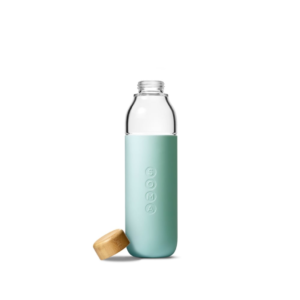This post doesn’t have anything to do with tendon pain specifically, but I figured I’d give my thoughts on what sort of cookware is best to use. Because what you put into your body matters, and any additional stress can, in fact, make other conditions (like tendonopathies) become that much easier to fall into.
Okay, so let’s get to it. I’m going to tackle the big one first: teflon. My opinion is: don’t use it. Ever.
While the jury’s still out on the effects of teflon and PFOA (perfluorooctanoic acid, which can actually kill any pet birds you might have around), I just can’t imagine why anyone would want to take any chance at all with their health when there are cheap cookware alternatives that have absolutely no questions or qualms associated with them. I mean really. You want teflon flaking off in your food? I sure don’t.
Yes, teflon is cheap and pretty much ubiquitous. So what? So is gasoline, and I don’t see too many people putting that into their bodies. Your health is your most important asset, and cookware is not the place to make the quick-and-easy decision.
Anyway, no teflon. Let’s look at the alternatives…
Stainless steel is a pretty good choice. It’s more or less indestructible, you can buy it in most cookware stores, and it looks good in the kitchen. However, unless you get surgical-grade stainless steel, there is a possibility (probability, really) that some of the chrome and nickel in the cookware will bleed out into your food over time. Also, even a normal-grade SS set (like this All-Clad one on Amazon) will set you back a lot of money. And you more or less have to deglaze the pan right after you cook stuff, which is kind of a hassle. But it does look good in the kitchen…
Copper is the standard for professional kitchens, but costs a lot. Also, copper can leach into your food, too. Unless you really just have to have it, there are cheaper alternatives.
Cast iron is great. There is evidence that some can come off in food, but iron isn’t a problem for menstruating women at all, and isn’t for men if they are either deficient in iron to begin with or give blood regularly. So if you’re a guy who cooks with cast iron a lot, look into your local blood-drive groups and get in touch with one. It’s a nice thing to do all on its own (hey, you might save a life), and in terms of selfish reasons, one of the leading theories about why people age has to do with the build-up of metals in the human body. Among these, iron is a prime suspect; one theory about why women generally live longer than men holds that it’s because women regularly purge a lot of the iron from their systems during menstruation.
Aluminum: bad idea, especially if Alzheimer’s runs in your family. Sure, aluminum is everywhere. It’s one of the most common chemicals around, and aluminum cookware companies take the stance of “Hey, you’re getting it anyway, and the amount that comes from cookware isn’t really much of the total.” This is very true, but why would you add anything at all to the total when you don’t have to? Much like running a risk with teflon, it just doesn’t make sense to add even incremental amounts when there are safe alternatives.
Ceramic pans are a good middle ground, and what I personally use at home most of the time. (I do use a cast iron skillet for stuff like hamburgers, which absorb less iron from the skillet for some reason…maybe less surface contact and shorter cooking time versus a stir-fry or something.) Ceramic cookware has a lot of pluses. It’s relatively cheap, and will become cheaper over the long haul because you don’t need dish soap to clean the stuff (in fact, soap is not supposed to be used at all; just scrub with hot water and a stiff non-metal brush). It will also basically last until you break it. There are no real health concerns in the USA, where lead and cadmium have been phased out of the manufacturing process. (However, if you see a ceramic pan that says “Not for food preparation”, you would do well to obey the label!)
Be sure not to use metal utensils when cooking with any of the above, so as not to damage the finish of the pan. I like wood or bamboo spatulas myself, preferring them over the plastic models because there always seems to be a new study coming out about how some plastic that was thought to be safe suddenly isn’t. And then some are rated okay at certain temperatures but not others… It’s too much of a hassle to try to remember all that, so I just avoid the whole thing. Bamboo and wood have both been used for millennia and no problems reported. I’ll take that safety record.
On a related note, plastic water bottles are not the best solution. I know, I know, they’re everywhere and it’s more or less impossible not to drink out of one if you buy any kind of drink from a convenience store or vending machine. But in order to limit damage, I ordered myself a glass drinking bottle for home use (which accounts for probably 70-80% of my total water intake). There are no carcinogen issues with glass; it’s been used for decades and the only real danger was that you might drop it and break the thing. With modern strengthening methods, though, even that has been addressed. I have a Soma water bottle that cost about thirty bucks and works great. Furthermore, it’s nice to look at and feels good in my hand. If you’re still using an old plastic bottle, do yourself a favor and get something that will make both you and your kitchen look better.


